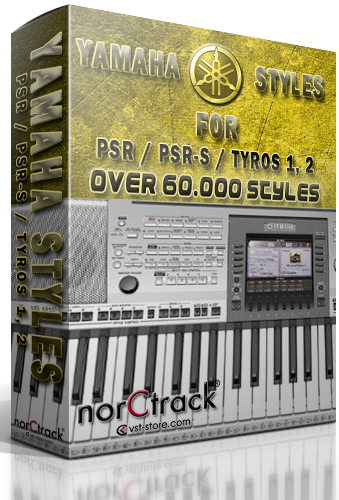Yamaha Psr S710 Styles
• DIGITAL WORKSTATION R e f e r e n c e M a n u a l This Reference Manual explains advanced features of the PSR-S910/S710 that are not explained in the Owner’s Manual. Please read the Owner’s Manual first, before reading this Reference Manual. • 1 Voices – Playing the Keyboard – Voice Characteristics. 3 Selecting GM/XG or Other Voices from the Panel. 4 Effect-Related Settings.
5 Pitch-Related Settings. 8 Editing Voices (Voice Set). 10 Editing Organ Flutes Parameters. 15 2 Styles –. • These Voices capture the dynamic textures and subtle nuances of electric instruments—thanks to a huge amount of memory and some very sophisticated programming.

2 PSR-S970/S770 Data List Category Voice Name Program Change Voice Type MSB LSB PC# (1–128) Piano ConcertGrand 0 122 1 S.Art! PopGrand 104 11 1 S.Art! Shop for the Yamaha PSR-S710 61-KEY ARRANGER WORKSTATION and receive free shipping on your order and the guaranteed lowest price.
These acoustic instrument sounds also benefit from Yamaha’s sophisticated technology—and feature a sound so finely detailed and natural, you’ll swear you’re playing the real thing! Drums Various drum and percussion sounds are assigned to individual keys, letting you play the sounds from the keyboard. • Press the desired [A]–[J] button to call up the Voice Selection display of GM/XG Voices, GM2 Voices, etc. (PSR-S910) You can find the “Legacy” folder in this display. This folder contains previous Yamaha keyboards’ Voices (such as PSR-S900, PSR-S700, NOTE etc.) for data compatibility with other models.
• Effect-Related Settings Setting the Touch Sensitivity of the Keyboard You can adjust the touch response of the instrument (how the sound responds to the way you play the keys). The touch sensitivity type becomes the common setting for all Voices. NOTE Some Voices are purposely designed without touch sensitivity, in order to emulate the true characteristics of the actual instrument (for example, conventional organs, which have no touch response). • Selecting the Harmony/Echo type You can select the desired Harmony/Echo effect from a variety of types. When the [MONO] button is turned to on or you use the Super Articulation Voices, the Harmony/Echo effect may not work properly. NOTE Turn the [HARMONY/ECHO] button on. Diablo 2 Lvl 99 Chars. Call up the operation display.
Robokill 3 Full. • ■ Echo Types When one of the Echo Types is selected, the corresponding effect (echo, tremolo, trill) is applied to the note played in the right-hand section of the keyboard in time with the currently set tempo, regardless of the [ACMP] and the LEFT part on/off status. • Pitch-Related Settings Fine-tuning the Pitch of the Entire Instrument You can fine-tune the pitch of the entire instrument—useful when you play the PSR-S910/S710 along with other instruments or CD music. Please note that the Tune function does not affect the Drum Kit or SFX Kit Voices and audio files. • Change the following settings as necessary.
[2 ▲▼] BASE NOTE [3 ▲▼]– TUNE [5 ▲▼] [6 ▲▼]/ PART SELECT [7 ▲▼] [8 ▲▼] MARK ON/OFF To register the Scale Tune settings to the Registration Memory, be sure to checkmark the SCALE item in the REGISTRATION MEMORY CONTENTS dis- NOTE play. • Editing Voices (Voice Set) The instrument has a Voice Set feature that allows you to create your own Voices by editing some parameters of the existing Voices. Once you’ve created a Voice, you can save it as a User Voice to the USER drive or external devices for future recall. • Editable Parameters in the VOICE SET Displays The Voice Set parameters are organized into five different displays. The parameters in each display are described separately, below. The available parameters differ depending on the Voice.
NOTE ■ COMMON Page [1 ▲▼] VOLUME [2 ▲▼]/ TOUCH SENSE. • ■ CONTROLLER Page MODULATION The MODULATION wheel can be used to modulate the parameters below as well as the pitch (vibrato). Here, you can set the degree to which the MODULATION wheel modulates each of the following parameters. [2 ▲▼] FILTER [3 ▲▼] AMPLITUDE. • The EG (Envelope Generator) settings determine how the level of the sound changes in time. This lets you reproduce many sound characteristics of natural acoustic instruments—such as the quick attack and decay of percussion sounds, or the long release of a sustained piano tone. • 2 DSP [1 ▲▼]– DSP TYPE [4 ▲▼] [5 ▲▼]– VARIATION [8 ▲▼] [5 ▲▼] ON/OFF PARAMETER [6 ▲▼] VALUE –[8 ▲▼] 3 EQ Determines the Frequency and Gain of the Low and High EQ bands.
For information about EQ, refer to page ■. • Editing Organ Flutes Parameters The Organ Flute Voices selected from the [ORGAN FLUTES] button can be edited by adjusting the footage levers, adding the attack sound, applying effect and equalizer, etc. CAUTION After editing, go to the Voice Selection display by pressing the [I] (PRESETS) button and save the setting. The settings will be lost if you select another Voice or turn the power to the instrument off without executing the Save operation. • Styles – Playing Rhythm and Accompaniment – Contents Selecting the Chord Fingering Type Style Playback Related Settings Split Point Settings Memorizing the Original One Touch Setting Creating/Editing Styles (Style Creator) • Realtime Recording • Step Recording • Style Assembly • Editing the Rhythmic Feel •. The Fingered type recognizes the various chord types which are listed on the Data List available at the Yamaha website and can be looked up using the Chord Tutor function on FINGERED ON BASS Accepts the same fingerings as Fingered, but the lowest note played in the.